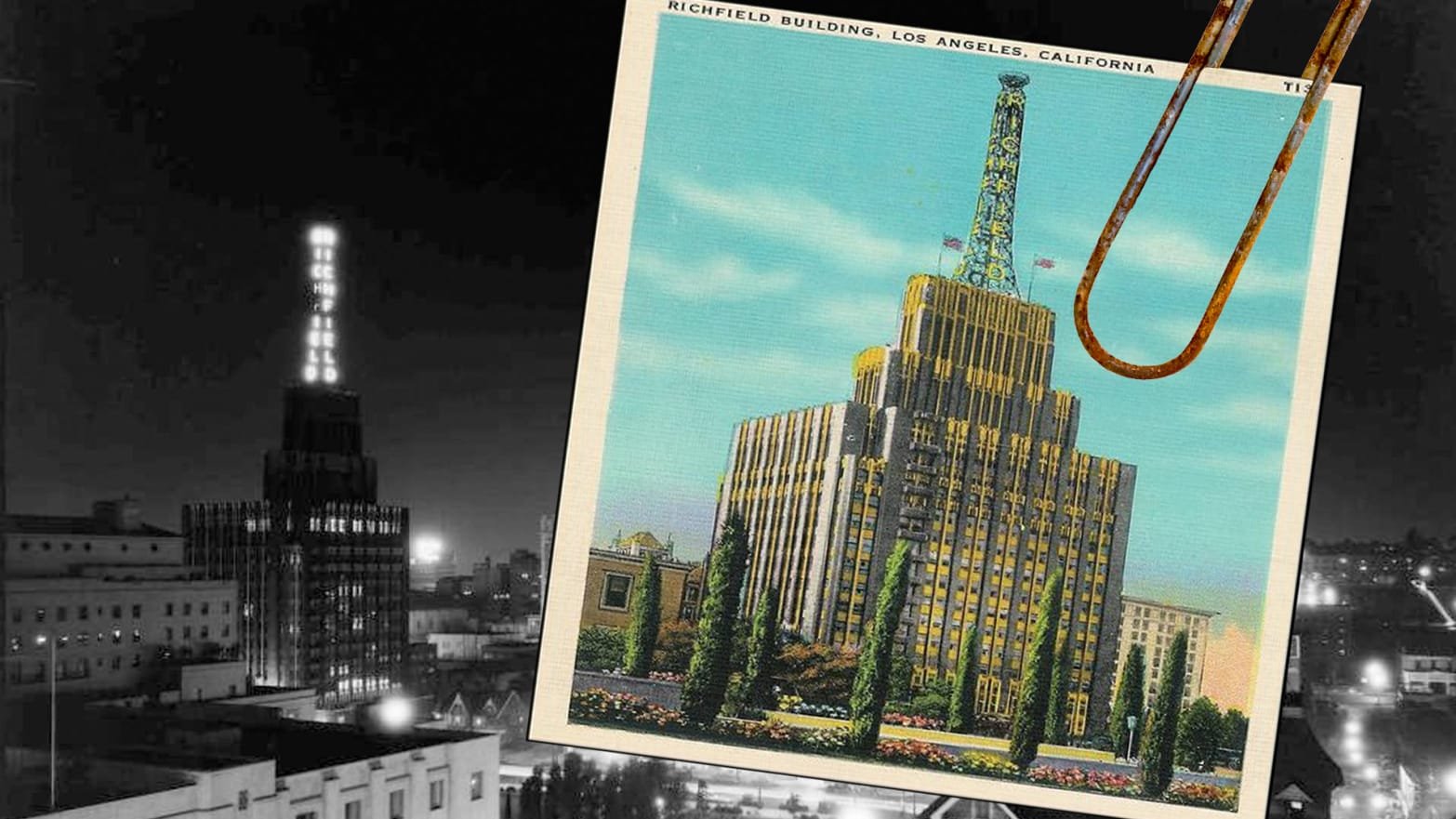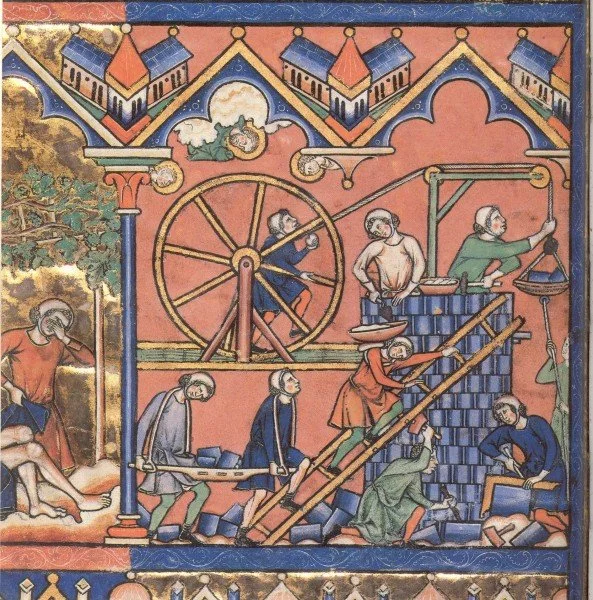Louis Vuitton's Fall/Winter 2011 runway show featured vintage elevators as the backdrop, paying homage to the brand's roots in luxury luggage and the grand era of travel. The elevators were 19th century wrought iron birdcage elevators, with an elegant and exclusive atmosphere.
Read MoreThe Richfield Tower is a prime example of a 1920s Art Deco building located in the heart of downtown Los Angeles. The building, which served as the headquarters for the Richfield Oil Company, is known for its intricate details and opulent design. Recently, archive photos and records were discovered that provide a glimpse into the luxurious design of the building's elevators.
Read MoreFrank Lloyd Wright's design for Crystal City was a visionary concept for a vertical city, comprising of interconnected skyscrapers and underground spaces. The renderings of this unbuilt project, brought to life by architect David Romero, show a complex of interconnected buildings that would have risen high above the city, connected by a network of elevators and internal highways.
Read MoreLe Dokhan's, Paris Arc de Triomphe is a luxury hotel located close to the iconic Arc de Triomphe. Guest rooms, restaurant, bar, fitness center and exceptional service are offered but what makes this hotel truly unique is its elevator cab, made from a vintage Louis Vuitton steamer trunk, adding luxury and nostalgia to guest experience. Perfect choice for luxury travelers visiting Paris.
Read MoreAncient elevators such as Archimedes' typically consisted of a wooden platform or box drawn by hemp ropes through a vertical open shaft and powered by men or animals operating a capstan. These devices were used primarily to lift heavy loads such as water or building materials.
Read MoreAlex Begin of Bloomfield Hills, Michigan loved visiting the downtown J.L. Hudson store in Detroit as a child with his parents. The highlight for him was the over 50 elevators that serviced the 33 levels located on Woodward Avenue. Begin loved watching the elevator operators delivering patrons to their desired floors.
Read MoreArchitects and designers wanted to create a modern style better suited for the modern mechanical and industrial age marking. Art Deco celebrated movement and motion developed from what people saw as the aesthetics of the machine age. It was sleek and sophisticated, featuring smooth surfaces and bold colours in high contrasts like black and white.
Read MoreFew design styles are as widely recognized and appreciated as Art Deco. The iconic movement made an incredible mark on all fields of design, culture and commerce throughout the 1920s and ’30s. During that period, department stores grew into grand palaces of commerce celebrating society’s growing wealth in extravagant, ornamental and luxurious ways. This week we are going to look closer at Japanese Department Stores that celebrated Art Deco’s industrialization aesthetics with streamlined elegance and high quality craftsmanship.
Read MoreAn invitation from the worlds leading architect splashed Frank Lloyd Wrights name across newspaper headlines around the globe in the summer of 1956. The Mile High Building written in bold black ink and Wrights signature Red Square dominated a full page spread hailing the public to a press conference where Wright himself would unveil the design for a supertall skyscraper in Chicago.
Read MoreStaged with bold black panels along the main wall, the Assembly Room was furnished with custom Wrightian ottomans along with long plywood tables. Throughout the room other notable projects were put on display as part of the Sixty Years of Living Architecture exhibition showcasing the vast and capable work of the accomplished architect.
Read MoreUnpacking all the inscriptions Wright included in the drawings, one will find that the project is not just the design of a building, but a history of architecture. From the Great Pyramids and Eiffel Tower to the Empire State Building, Wright was placing The Illinois in the timeline of grand monuments.
Read MoreIn addition to being one of the most innovative architects of his day, Wright also dabbled as an urban planner. He saw design of modern cities as posing a serious problem; they were dense communities overly populated with people who didn’t have enough space to live fulfilling lives. While the other modernists like Corbusier and Mies van der Rohe were masterplanning dense urban cities and cookie-cutter towers of glass and steel, Wright was envisioning a broad utopian countryside with pockets of soft density spaced out between urban forests and agricultural land.
Read MoreSince its founding in 1831, Nihonbashi Takashimaya has been a people-centered department store that enhanced customers’ expectations on service and hospitality while closely mastering traditional manners and customs.
Read MoreThe Kasumigaseki Building, also referred to as the National Education Center is situated in Chiyoda district in Tokyo. As Japans first skyscraper, the distinguished building stands out for its architectural brilliance and massive height along with innovative building technologies.
Read MoreIn 1922, Russian architect El Lissitzky designed a revolutionary new type of skyscraper called the Cloud Iron Towers. These towering structures were intended to be built in Moscow, and were designed to be plugged directly into the city's transportation system.
Read MoreThis is what it feels like when a “working artifact” morphs off the pages of history and into today. This particular artifact is located in the Birkbeck Building at 10 Adelaide Street East, Toronto, a historic 1908 building that houses the headquarters of the Ontario Heritage Trust. Bubelis is the trust’s architect and the man who decided to rebuild the elevator to look and operate as it did in 1908, the year the building opened.
Read MoreIn effect a parking garage proposal that first appeared in Popular Mechanics in December 1921 is one of the earliest examples of the automated elevator car park. The proposal went so far as far as to suggest a completely autonomous building functioning on its own without human interference. The hybrid robot-building took hold of engineers and urban planners imagination as it quickly moved into the collective consciousness.
Read MoreThe best internal part of the hotel from the 19th century is the lobby with the marble stairs and the two big candlelights. Around 1900 the Doelen Hotel was modernized by architects A.L van Gendt en Zonen when elevators would have been added to the grand staircase, along with further electrification of the rooms.
Read MoreRecently our team was contacted to inspect a 19th century building where the new owner had found a hand-powered (pull-rope) elevator. Completely in tact and fully preserved complete with original rope and pulley, platform and counterweight system along with painted on data tags, it was immediately identified as an Otis-Fensom Elevator from the 1890’s.
Read MoreFor over a hundred years Nations around the world have honoured people, events, and significant moments through commemorative stamps. Unlike other regular postage stamps (known as definitives), commemorative stamps are printed only once and are allowed to go out of circulation as their supply is used up. Which brings us some 161 Years after March 23, 1857 when Elisha Otis' 1st Elevator was installed at 488 Broadway, New York City.
Read More



















